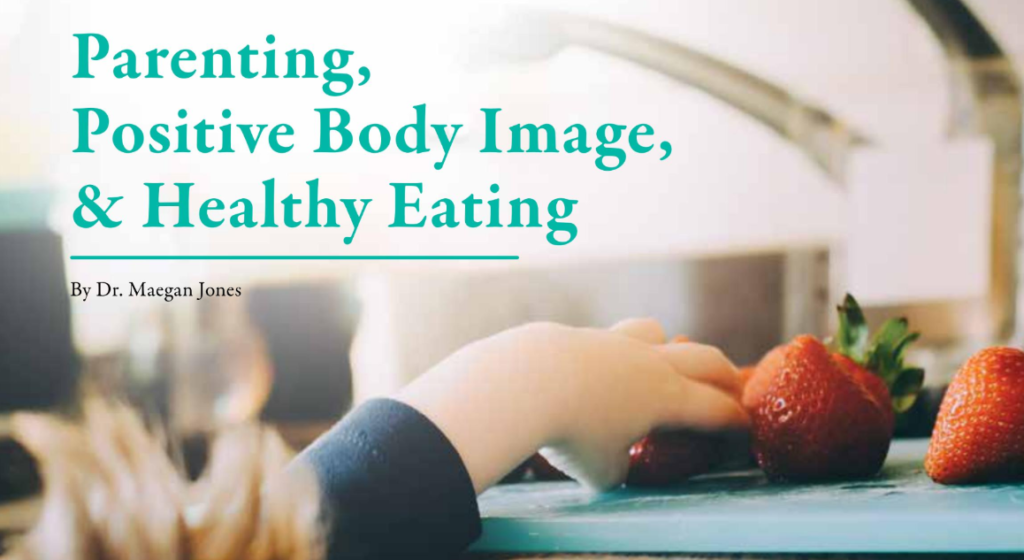Broadly speaking, body image refers to your thoughts and feelings about your appearance and shape. Unfortunately, research suggests that children as young as four can start to develop negative feelings about themselves, and by age 18, 75-80% of girls and 65-70% of boys are dissatisfied with their bodies. These negative feelings can lead to the development of disordered eating habits like excessive restriction of food intake, emotional eating, vomiting, and more. But, these negative feelings and habits are preventable! So, what can caregivers do to help their children and adolescents continue to feel positively about themselves?
“To bring up a child in the way he should go – travel that way yourself. – Josh Billings”
Modeling. As any parent or caregiver knows, kids and teens are observant! Sometimes that means that even when we say positive things about their bodies or eating and exercise, they learn more from what their caregivers do or say about themselves. Children in particular are developing schemas, or mental representations, of what the world should look like. In childhood, parents and caregivers are the main source of influence on how kids develop ideas about the world; caregivers’ feelings and beliefs about their bodies shape the schemas about body satisfaction and eating that children develop.
Therefore, while it’s certainly easier to say than to do, one of the best things we can do for children is avoid making negative comments about your own body, or someone else’s. Children and teens pick up on that negative self-talk, and often absorb it. Even better, try talking positively about your body and what it does for you! As a bonus, the more we talk positively about ourselves, the more we also start to internalize those happier thoughts.
Modeling also relates to what we actually eat and do. Exercising in a fun way as a family is an excellent way to teach kids about what their bodies can do for them. Unfortunately, we often look at exercise as a form of punishment, but studies show that when kids enjoy exercise, they not only feel better physically, but mentally. So, go on a family walk or bike ride!
Talking. There are a lot of pressures on children and teens to look a certain way, from negative talk or teasing from friends and peers, to what they see on social media. Talking openly to your child not only about how they feel about themselves, but about what they’re seeing and hearing from others is important. For instance, most social media pictures are heavily edited or staged, and studies suggest that the more children and teens recognize that, the less of a negative effect those idealized images have on their feelings about themselves. Social media is here to stay, both the good and the bad, but the more we can talk openly with kids and teens about what they’re seeing, the better their mental health and body image will be.
Eat dinner together! This may seem like a “simple” solution (though logistically, I know that isn’t always the case!), but there are a surprisingly large number of benefits to family mealtimes. Not only are family mealtimes associated with less restrictive dieting and overeating, but teens who eat with their families are also more likely to eat more vegetables, do well in school, and feel more connected to their families, while also being less likely to smoke, drink, or do drugs.
There are a lot of influences on body image and eating habits beyond the family environment, but modeling, talking, and family mealtimes with children can help provide barriers against negative feelings and eating habits. They also help children and teens themselves feel better in those difficult moments. If you have concerns about your child or teen’s body image or eating habits, please reach out to a medical provider, or check out resources such as the National Eating Disorder Association’s (NEDA) website, at https://www.nationaleatingdisorders.org/.

